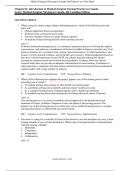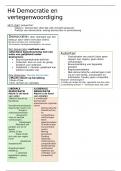Exam (elaborations)
Test bank medical surgical nursing in canada 4th edition lewis 2023 updated.
- Course
- Institution
When caring for clients using evidence-informed practice, which of the following does the nurse use? a. Clinical judgement based on experience b. Evidence from a clinical research study c. The best available evidence to guide clinical expertise d. Evaluation of data showing that the client out...
[Show more]




